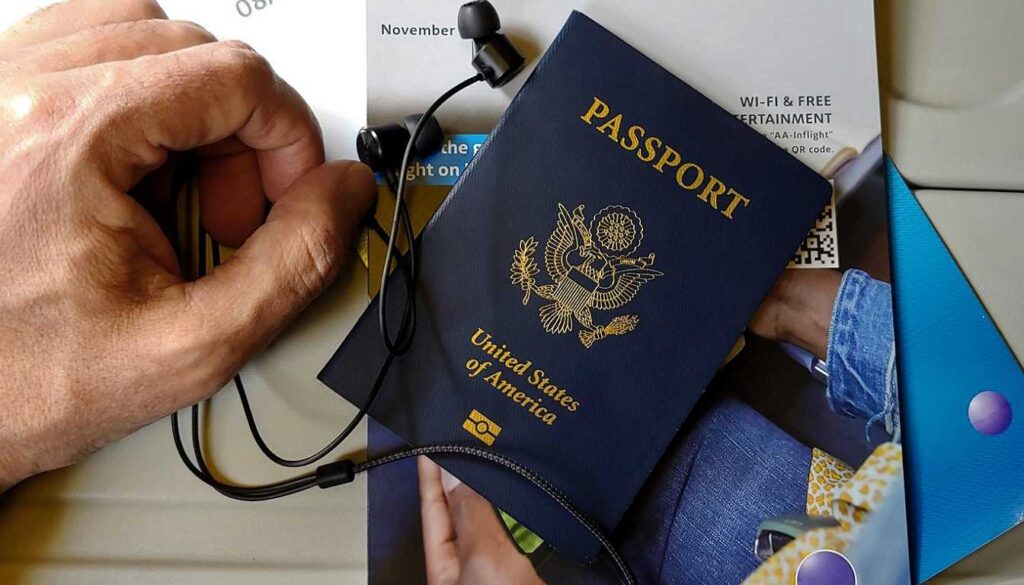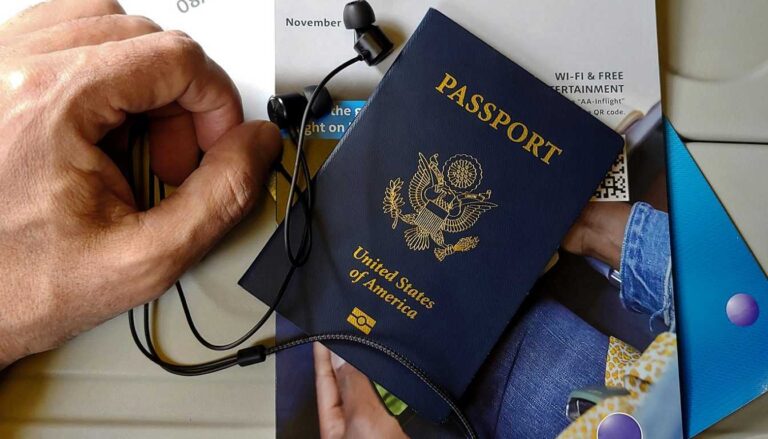The rise of remote work has led to a new type of traveler – digital nomads. They work and travel, exploring new places while keeping their jobs. But, figuring out visa rules can be tough.

We’ve made a list of countries with easy access and low-cost living for digital nomads in 2025. Whether you’re a pro or just starting, these places offer a great mix of work and fun.
Key Takeaways
- Top countries offering digital nomad visas in 2025
- Key benefits of each visa program
- Cost of living in popular digital nomad destinations
- Requirements for eligibility
- Tips for a smooth transition to nomad life
The Digital Nomad Lifestyle in 2025
In 2025, the digital nomad lifestyle is growing, offering new chances for remote workers around the world. With the rise of remote work visas, it’s easier for digital nomads to live and work abroad. They can explore new cultures while keeping their careers going.

Evolution of Remote Work Culture
The remote work culture has changed a lot, becoming more advanced and accepted. Technological advancements have helped a lot, making it easy to talk and work together from anywhere. Now, many countries offer remote work visas to draw in talented people from all over.
Benefits of Obtaining a Digital Nomad Visa
Getting a digital nomad visa has many perks. You can legally live in foreign countries, enjoy new experiences, and meet others who share your lifestyle. These visas also come with tax benefits and easy application processes, helping remote workers move to new places.
Who Qualifies as a Digital Nomad
A digital nomad is someone who works online, often in tech, and travels a lot. To get a digital nomad visa, you need to show you have a steady income, health insurance, and sometimes speak the local language. Knowing these rules is key for those wanting to live the digital nomad lifestyle.
Best Digital Nomad Visas 2025: Evaluation Criteria
When looking at the best digital nomad visas for 2025, it’s key to know what makes a visa great. A top visa should be easy to apply for, affordable, flexible, and offer tax benefits.
Application Simplicity and Processing Speed
Digital nomads value a simple application process. Countries with online applications, clear requirements, and quick processing are favored. For example, Estonia’s visa can be applied for online in just 30 days.
Cost Analysis: Application Fees and Income Requirements
The cost to apply for a digital nomad visa varies a lot. Some places have low or no fees but need a certain income. It’s important to compare costs to see which visa is most affordable.

Duration and Renewal Flexibility
The length of a visa and how easy it is to renew are key. Visas with longer stays and simple renewal options help nomads plan better.
Tax Benefits and Implications
It’s crucial to understand the tax side of a digital nomad visa. Some countries offer tax breaks for foreign income. Knowing this helps nomads pick a place that fits their financial plans.
| Country | Application Fee | Minimum Income Requirement | Visa Duration |
|---|---|---|---|
| Estonia | $100 | $3,500/month | 12 months |
| Portugal | $50 | $2,000/month | 12-24 months |
| Thailand | $200 | $1,500/month | 12-24 months |
European Countries with Accessible Digital Nomad Programs
The digital nomad lifestyle is booming in Europe. This is thanks to country-specific programs that offer ease, affordability, and a great quality of life. Many European nations have created visa options just for remote workers. This makes it easier for digital nomads to pick their next destination.

Portugal: D7 Visa and Digital Nomad Option
Portugal’s D7 visa is a hit among digital nomads. It’s easy to apply for and has low income needs. To get it, you need to show you have a steady income from remote work or freelancing. You also need to have health insurance.
Key Benefits: Portugal has a mild climate, rich culture, and a friendly expat community.
Croatia: Streamlined Digital Nomad Residence Permit
Croatia has a new digital nomad residence permit. It’s designed to draw remote workers. The process is simple, and the permit lasts up to a year. You need to prove you have income and health insurance.
Notable Advantage: Croatia’s beauty and historic cities are a big draw.
Estonia: Pioneer in Digital Nomad Visas
Estonia was the first to offer a digital nomad visa. It lets remote workers live and work there for up to a year. You need to show you have a steady income and health insurance.
Key Feature: Estonia’s e-residency program offers a digital business environment.
Spain: New Digital Nomad Visa Benefits
Spain’s new digital nomad visa has many perks. It lets you work remotely in Spain for up to a year. It’s for non-EU citizens and requires proof of income and health insurance.
Highlight: Spain’s culture and diverse landscapes are very appealing.
| Country | Visa/Permit | Duration | Income Requirement |
|---|---|---|---|
| Portugal | D7 Visa | 1 year, renewable | Minimum income threshold |
| Croatia | Digital Nomad Residence Permit | Up to 1 year | Proof of sufficient income |
| Estonia | Digital Nomad Visa | Up to 1 year | Reliable income |
| Spain | Digital Nomad Visa | Up to 1 year | Sufficient income |
Budget-Friendly Asian Destinations for Digital Nomads
Asia is perfect for digital nomads looking for affordable places. Countries here offer culture, low costs, and modern comforts. The rise of digital nomad visas makes settling in easier.

Thailand: Long-Term Resident Visa and Cost of Living
Thailand is now a top spot for digital nomads with its Long-Term Resident Visa. This visa lets remote workers stay up to 10 years. Living costs are low, with monthly expenses averaging $800-$1,200 depending on lifestyle and location.
Indonesia: Affordable Second Home Visa
Indonesia’s Second Home Visa is a great choice for up to 5 or 10 years. It’s appealing because of the low cost of living and vibrant culture. Remote workers can live comfortably in Bali for $500-$1,000 a month.
Malaysia: DE Rantau Program and Its Advantages
Malaysia’s DE Rantau program is new and aims to attract digital nomads and skilled workers. It has a simple application and offers many benefits. Malaysia’s modern infrastructure and diverse culture make it a great choice for remote workers.
Taiwan: Gold Card Benefits and Requirements
Taiwan’s Gold Card is a top visa with many perks, like a four-year stay and work freedom. The application is easy, and living costs are reasonable, with monthly expenses averaging $1,000-$1,800. Taiwan is perfect for those wanting Asian culture and modern comforts.
Asian countries are changing the game for remote work visas. They make it easy for digital nomads to pick their next destination based on their needs and budget. As the world connects more, remote work opportunities grow, offering a great chance to work and travel.
“The world is a book, and those who do not travel read only one page.” – Saint Augustine
Latin American Digital Nomad Havens with Easy Entry
Latin America is a top pick for digital nomads. It’s known for its friendly visa rules, rich culture, and lively lifestyle. The mix of city buzz and natural wonders makes it a favorite for remote workers.
Mexico: Simplified Temporary Resident Visa Process
Mexico has made it easier for digital nomads to live and work there. You just need to show you have income and health insurance. The visa lasts up to a year and can be renewed.
Key Benefits: Easy to apply, can renew, and it’s affordable.
Costa Rica: Rentista Visa for Remote Workers
Costa Rica’s Rentista Visa is for those with a steady income from abroad. It’s easy to apply for, and the quality of life is high.
Requirements: You need to show you make $2,500 a month, have health insurance, and a clean record.
Brazil: New Digital Nomad Visa Framework
Brazil has a new visa for digital nomads. It’s simple to apply for and welcomes remote workers.
Visa Details: It’s good for a year, can be renewed, and you can work locally.
Colombia: Low-Cost Digital Nomad Visa Option
Colombia has a cheap digital nomad visa. It’s easy to apply for, needing only income proof and health insurance.
Benefits: It’s cheap to apply for, living costs are low, and the culture is vibrant.
| Country | Visa Type | Income Requirement | Visa Duration |
|---|---|---|---|
| Mexico | Temporary Resident Visa | $1,500/month | 1 year, renewable |
| Costa Rica | Rentista Visa | $2,500/month | 2 years, renewable |
| Brazil | Digital Nomad Visa | $1,500/month | 1 year, renewable |
| Colombia | Digital Nomad Visa | $690/month | 3 years, renewable |

Application Processes and Documentation Simplified
Applying for digital nomad visas can seem tough. But knowing what documents you need can make it easier. Countries are making their application processes smoother for remote workers.
First, you need to know what most countries ask for. You’ll need a valid passport, proof of income, and health insurance that covers you abroad.
Essential Documentation Checklist
Before you apply, make sure you have these documents:
- A valid passport with at least six months’ validity
- Proof of remote income (bank statements, employment contracts)
- Health insurance that covers you internationally
- Completed application form, usually available online
- Recent passport-sized photographs
Health Insurance Options and Requirements
Health insurance is key for digital nomad visas. Most countries want insurance that covers:
- Medical expenses up to a certain amount (varies by country)
- Emergency medical evacuations
- Repatriation of remains
Popular health insurance options include Allianz Care and SafetyWing. Make sure your policy fits your destination country’s needs.
Proving Remote Income: Strategies and Tips
Showing you have remote income is vital. Here are some tips:
- Bank statements showing regular income
- Employment contracts or freelance agreements
- Tax returns or invoices that demonstrate your income level
It’s smart to have a letter from your employer or a detailed income breakdown. This should show you have a steady income that meets the country’s standards.
By preparing your documents well and knowing what’s needed, you can make the application process easier for your digital nomad visa.
Cost Comparison: Most Affordable Digital Nomad Destinations
Remote work has made comparing costs of digital nomad spots crucial. As more people work remotely, knowing the financial impact of each destination is key.
Visa Fee Breakdown by Country
Visa costs for digital nomads differ greatly by country. Estonia’s visa is about $390, while Portugal’s D7 visa is around $260. Thailand offers long-term visas for just $100.
| Country | Visa Fee |
|---|---|
| Estonia | $390 |
| Portugal | $260 |
| Thailand | $100 |
Monthly Living Expenses in Top Destinations
Cost of living is a big factor in choosing a digital nomad spot. Portugal and Croatia have lower living costs, around $1,500 to $2,500 monthly. But, Taiwan and Singapore are pricier, over $3,000 monthly.
Internet Quality vs. Cost Analysis
Good internet is essential for digital nomads. South Korea and Japan have fast internet but are pricey. Thailand and Indonesia offer better internet for less money.
“The best way to get started is to quit talking and begin doing.” – Walt Disney
Transportation and Accommodation Costs
Transport and housing costs affect your digital nomad budget. Cities like Singapore and Taipei have good public transport, saving money. Housing options range from cheap hostels to fancy apartments.
By weighing these costs, digital nomads can pick the best spot for their budget and lifestyle.
Practical Considerations for American Digital Nomads
As American digital nomads start their journey abroad, they face many practical challenges. The digital nomad lifestyle mixes work and travel, but it has its own hurdles.
US Tax Obligations While Living Abroad
Understanding US tax obligations is crucial for American digital nomads. The US taxes its citizens on all income worldwide, no matter where they live. They must file taxes every year, reporting their income and claiming exclusions if they qualify.
Key Tax Considerations:
- Filing threshold: $12,950 for single filers in 2025
- Foreign Earned Income Exclusion (FEIE): Up to $112,000 in 2025
- Foreign Bank Account Reporting (FBAR) if accounts exceed $10,000
| Tax Filing Status | Filing Threshold | FEIE Limit |
|---|---|---|
| Single | $12,950 | $112,000 |
| Joint | $25,900 | $224,000 |
Healthcare Solutions for Long-Term Travel
Healthcare is a key concern. Some countries have great, affordable healthcare, while others don’t. American digital nomads should get international health insurance that covers them worldwide.
“As a digital nomad, having the right health insurance is crucial. It not only provides financial protection but also gives you peace of mind, allowing you to focus on your work and travel experiences.” – Mark, Digital Nomad
Banking, Payments, and Financial Management
Managing finances across borders is tough. Digital nomads should look for banks and services that support international transactions, have low fees, and let you access your money easily.
By tackling these practical issues, American digital nomads can better handle their lifestyle. They can enjoy the perks of living and working abroad.
Conclusion: Selecting Your Ideal Digital Nomad Destination in 2025
The world of remote work is changing fast, offering digital nomads more choices than ever. Countries around the globe are now welcoming remote workers with special visas. The right place for you depends on things like cost, how easy it is to apply, and what you like to do.
Looking at the best places for digital nomads, it’s key to think about what each offers. Europe’s Portugal, Croatia, and Estonia, and Asia’s Thailand, Indonesia, and Malaysia, all have their perks. They range from being affordable to making it easy to get a visa.
Before choosing, digital nomads should think about what matters most to them. Do you want a low-cost life, cultural experiences, or an easy visa process? Knowing what each country offers can help you pick the best fit for your work and personal life.
In the end, finding the perfect spot for digital nomads in 2025 will mix visa rules, living costs, and personal likes. By looking at these carefully, you can pick a place that makes your remote work better and your life richer.
FAQ
What is a digital nomad visa?
A digital nomad visa lets remote workers live and work in another country for a set time. Places like Estonia, Portugal, and Croatia offer these visas to draw in digital workers.
Which countries offer the easiest digital nomad visas?
Countries like Thailand, Indonesia, Malaysia, and Mexico make it easy to get a digital nomad visa. Thailand has a Long-Term Resident Visa, and Malaysia has the DE Rantau Program.
How do I qualify as a digital nomad?
To be a digital nomad, you must show you work remotely, have income from abroad, and have health insurance. Spain and Costa Rica have specific rules for digital nomads.
What are the tax implications of holding a digital nomad visa?
Taxes differ by country. For example, Portugal’s D7 Visa is tax-friendly for digital nomads. But, other countries might tax your global income.
Can I apply for a digital nomad visa if I’m self-employed?
Yes, many countries let self-employed people get digital nomad visas. Estonia and Croatia welcome self-employed digital nomads if they meet income and health insurance needs.
How long does it take to process a digital nomad visa application?
Processing times vary. Estonia is quick, often in weeks. But, Brazil and Colombia might take longer due to complex processes.
Do I need health insurance to apply for a digital nomad visa?
Yes, most countries require health insurance for digital nomads. The coverage needed varies, like Taiwan’s Gold Card.
Can I bring my family with me on a digital nomad visa?
Some countries let digital nomads bring family. Portugal’s D7 Visa and Malaysia’s DE Rantau Program allow it, but with certain rules.
What are the income requirements for a digital nomad visa?
Income needs differ. Countries like Croatia and Spain have minimum income rules to ensure applicants can support themselves abroad.
How do I prove my remote income for a digital nomad visa application?
You’ll need to show income through bank statements, contracts, or invoices. Costa Rica and Colombia have specific income proof guidelines.















